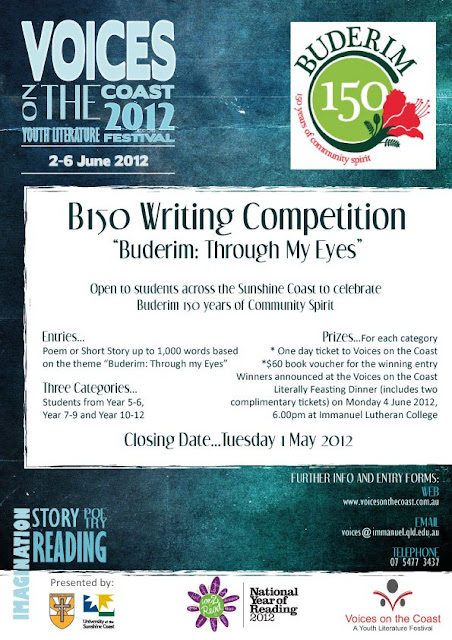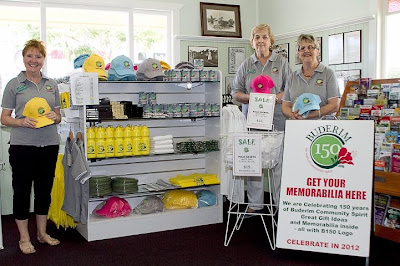MEMORIES OF
BUDERIM
BY GRAHAM KEITH DICKMAN
BORN
20TH JULY 1949
Douglas (Doug) Francis Dickman owned and
lived at the property No 35 King Street Buderim Qld 4556
Born 13 December 1908 at Charlwood Fassifern Surname at birth was Dieckmann.
The Dieckmann surname was changed by his
father Charles Dieckmann in approx 1915 so that his older brother Robert Sydney
Dieckmann could join the Australian Army in World War 1.
So the name was changed to Dickman. Doug's Father , Charles Dieckmann was a
Farmer and aged age 38 years when Doug was born. His mother was Annie Elizabeth (formerly Krueger) who was
aged 42 years when he was born at Charlwood in the Fassifern Valley near Kalbar
Queensland.
He had five brothers and two sisters. On Doug birth their ages were:
Robert Sydney aged 12 years , Millie May aged 11 years, Clarence Roy aged 9 years, Cecil Morton aged 7 years, Hassil Donald aged 5 years , Eveline Annie aged 3 years, and Collin
Charles aged 1 year.
The family moved to Buderim (year unknown)
and all lived at Number 35 King Street. As well as being Farmers they worked in the Timber
industry. Doug never married, and lived in the old
house at 35 King Street until his death 22/07/1997. The family would
refer to the old house as the 'old homestead'. Eveline his sister also lived in the same
house until she passed away, she also never married.
My name is Graham Keith Dickman son to
Keith Clarence Dickman who's father was Clarence Roy.
I was born in Nambour General Hospital on
July 20, 1949 and lived at Woombye with my Mother , 'Jean Lilian' Dickman, my Father, ' Keith Clarence'and my two
brother Peter Raymond and Robert Kerry.
I remember my visits to the old
homestead. On the mantle-piece of
a peice of furniture there would be jars of various hard boiled lollies. A choice of these were always offered
to me. But my favorite was the
large piece of choclate cake (freshly baked) from the wood oven by my Aunty
Eveline. She was a tall lady as
were all her brothers. Eveline
would cook and keep house for her brothers who remained at home. Some had married and moved away as they
got older.
Members of the family would travel to
Kingaroy occasionally and always bring back a large sack of peanuts in their
shell. This bag was stored under a
tank stand where I could be found helping myself to the peanuts. As farmers the brothers would win prizes
for the quality and size of their produce, I remember the very large lettuce
they would grow. They kept a chook pen and also grew their
own coffee trees. In those days
they owned a large area of land but was slowly sold off as the years passed.
I remember one day on a visit with my Dad
to see Doug, he mentioned that he needed to replace a few wooden stumps under
his old house. No thought of
employing a tradesperson as the
Dickmans were very self motivated , Doug asked his mate to go with him and they
took his old short wheel base Land Rover to a place where he felled a suitable
tree. Posts were cut and installed
under his house replacing the ones eaten by white-ants. As Doug got older and had more time, a lady
he had met from Melbourne asked him to look after a piece of land on the north
eastern side of Buderim where he developed a profitable passionfruit farm. Doug was a very good farmer, he
did not understand that the farm
was to be run at a loss for this lady who had very successful business in
Melbourne.
I asked Doug what his secret was in growing
lovely fruit and vegetables, and
also his many roses. He
showed me a 44 gallon drum with a Hessen bag over the top. In the drum was cow manure covered with
water. He would let it sit like
that for months with only the occasional stir.
A brother of Doug was Clarence Roy Dickman
who was born in 1899. He was my
father's (Keith Clarence Dickman) father or my (Graham Keith Dickman)
Grandfather. I never knew him as
his died after an accident on March 30, 1931. My father was only eight years old when his father died.
The events leading to Clarence Roy's death
are : he worked the large saw
blade at the Saw Mill that was located in the area where the swimming pool is
today. The mill was short of
lumber so Clarence, who was also a 'Teamster', got another guy to help him put
together a team of bullocks and dray to go and fall some lumber. Approximately 500 meters west of the top of
Dixon Road they felled a large tree.
Unfortunately it was a windy day and a large branch broke away from the
trunk of the tree as it fell and landed on Clarence. He died at the Nambour Hospital.
My father attended the Buderim State School. He would tell me stories of land
slippage at various locations around the mountain. Him and his mates would go out to Mons and wait for the Tram
coming from Palmwoods. As
the Tram slowed coming up one of the steep hills they would jump aboard the moving
tram and travel into Buderim town.
He also showed me the location of the first
Buderim Golf Club near the top of Jones Road. He told me of his involment with the building of
the Headland Golf Club at Buderim
where it is today in Golf Links Road.
My dad was an owner truck driver for the Maroochy Shire
Council. When the first nine
greens were being built at the new
Headland Golf Course, good drainage was required. Dad was asked to transport the
'finnings' from the Rail Yard at Palmwoods Railway Station.
These Finnings (which were what was left of the burned coal) were
off-loaded from the Steam Locomotive Trains when new coal and water was
loaded. He was a slight built man,
not as tall as his father and uncles, but he would hand load his truck with
these finnings and deliver them to each new 'Green' under construction.
Doug enjoyed his golf as did his
bothers. Hassil Donald Dickman
(five years older than Doug) was particularly good at Golf. Many winnings would be brought back to
their Buderim home in King Street.
Doug also enjoyed billards
and snooker. He was one of 13
Foundation members of the Buderim Billards and Snooker Club. In 1947 Doug and Ken Chadwick went to
Brisbane to collect their first Table.
Millie May Dickman one of Doug's sisters
was 11 years older than him. She
was one of the first staff in the
original Buderim Ginger Factory that was located in a disused blacksmith shop
in Main Street opposite the Buderim School Oval not far from the old shop of
Middys.
Dad would tell me that at Middys you could
buy anything from a 'pin' to an 'aeroplane' .
Cecil Morton or Cyril married Dorry who had
been married to Cyril's brother Clarence.
They had one child named Desmond before Cyril died from a bursed
appendix. I remember a day
when Desmond (Des) drove some of the family up Jones Road in his motor vehicle
he called a' Genive'. It had a
Dicky seat in the back where I was sitting. This vehicle lacked power so it stopped approximately half a
kilometer from the top. We all had
to get out and push the vehicle to the top then get back in to continue our
journey. As a kid I thought this a
lot of fun, pushing a car. ha ha !!
In the shire there were several sites for
the dumping of 'Night Soil'. One
of these sites was on the western side of Jones Road almost opposite Somerset
Drive. Also from memory there was
another piece of land used that also was on the western side of Jones Road but
further down toward Kerenjon
Avenue.
This photo was taken in
approximately October 1921 of the Dickman Family outside No 35 King Street
Buderim Qld 4556.
















